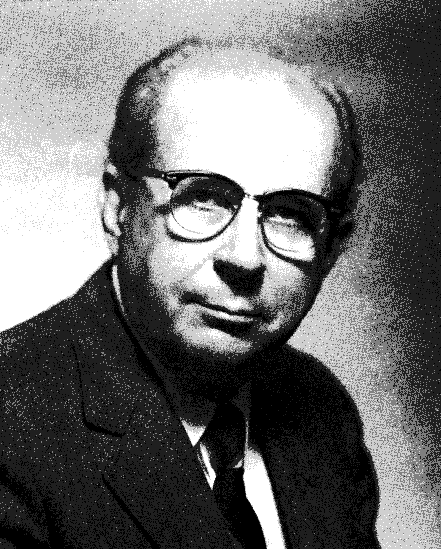| Profile | Major Works | Resources |
Nicholas Georgescu-Roegen, 1906-1994.


One of the most remarkable and profound thinkers in modern economics - and one of the few whose reputation and influence, despite relative neglect over his lifetime, has only increased over time and promises to keep on increasing.
Nicholas Georgescu-Roegen was trained in mathematical statistics at Bucharest and the Sorbonne - receiving his Ph.D at 24. In the 1930s, he spent three years at Harvard, where he was apprenticed in economics by Joseph Schumpeter. Georgescu-Roegen played an instrumental role in the Paretian revival, immediately putting his mark on this new field with a few outstanding papers on producer and consumer theory (1935, 1936) - which included a solution of the "integrability problem" as well as a criticism of the revealed preference-derivation of utility ("where is indifference?", he asked). He also set forth propositions on stochastic choice and lexicographic preferences.
After returning to Bucharest, Georgescu-Roegen took on official duties for the Romanian government, including a position in the post-war negotiations with the Soviet Union. In 1948, Georgescu-Roegen fled Communist-controlled Romania, stowing himself and his wife away in barrels aboard an Istanbul-bound freighter.
Georgescu-Roegen made his way back to the United States, finally settling at Vanderbilt University - finding the time, in the meanwhile, to contribute three seminal chapters to the celebrated Koopmans-edited 1951 Cowles monograph on linear programming and general equilibrium theory. There, we find several contributions - including the independent discovery of the Hawkins-Simon conditions, an alternative existence proof for von Neumann's system, the general laws of substitutability for Leontief systems and more. His ingenious contribution to the Marxian theory of crisis (1960) is also well-known.
In 1966, Georgescu-Roegen bailed out of the Neo-Walrasian ship with a salvo of critical torpedoes - contained in the insightful and erudite introduction to his Analytical Economics (1966). Reviewing the origins of early science, Georgescu-Roegen forwards two provocative propositions: firstly, that "theoretical science" necessarily deals with "arithmomorphic" concepts (i.e. phenomena having properties similar to numbers) which permits logical ordering of propositions; secondly, that as economics deals with non-arithmomorphic concepts, because economic conceptions (and their opposites) overlap and because "qualities" are as essential as quantities in economics, then, consequently, economics cannot be a theoretical science -- or at least, not one which can be handled by the use of logic. Dialectics is Georgescu-Roegen's preferred mode of analysis. There, he also introduced his initial ideas on a new biological or evolutionary approach to economic theory.
His ideas were further developed and consolidated in his magnum opus, The Entropy Law and the Economic Process (1971). Georgescu-Roegen's claims, among others, were that an economy faces limits to growth, for which he invoked the Second Law of Thermodynamics ("useful energy gets dissipated"). Although generally ignored by mainstream economics, he was hailed by the fledgling environmental movement and, until the end of his life, never ceased to speak out on his ideas for a new approach to economic theory. Today, his work is gaining influence, and his insights are being grafted into the new field of evolutionary economics.
|
Major works of Nicholas Georgescu-Roegen
|
|
HET
|
|
Resources on Nicholas Georgescu-Roegen
|
All rights reserved, Gonšalo L. Fonseca
